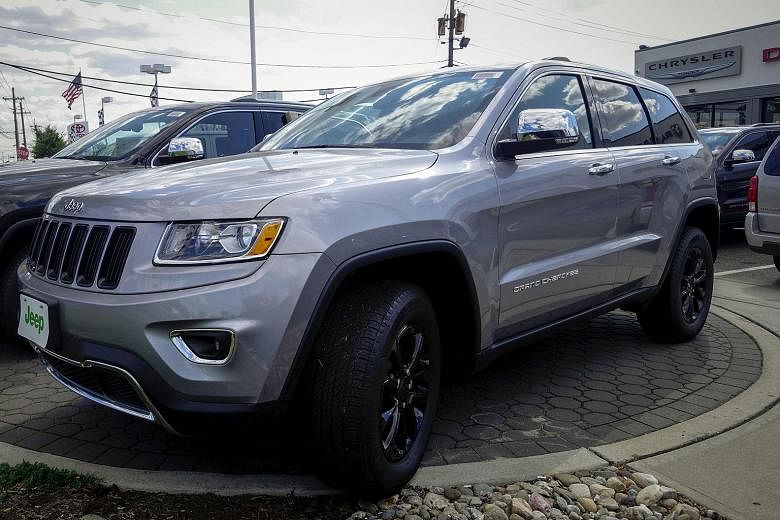If you are among the multitudes of drivers recently baffled by an encounter with the basic controls of a new car, you are in good company.
That sometimes-confused cohort would include people like myself, whose livelihoods as automotive journalists depend on knowing about the latest models in showrooms.
The confusion caused by fancy, new, not always intuitive, features and functions has made headlines in recent weeks. For example, the vagaries of selecting the transmission's park position may have been a factor in the death of Star Trek actor Anton Yelchin who was crushed by his 2015 Jeep Grand Cherokee when it rolled backwards down a driveway.
Typically, the "how does this thing work" impulse does not lead to such disastrous outcomes. And certainly there is no shame in being flummoxed when trying to enter an address into a dashboard navigation system, or linking a Bluetooth smartphone for hands-free operation.
But shifting the automatic transmission into the desired gear did not use to require a learning curve, as it too often does these days. When General Motors gave the world fully automatic transmissions in 1939 with its Hydra-Matic, the system used a shift lever on the steering column that clearly labelled each gear. It became the standard approach for decades.

Generally speaking, the way we control our cars was for a long time pretty much a settled matter: A steering wheel governs direction. A pedal applies the brakes. Speed is regulated by an accelerator pedal. And a gear shifter puts the vehicle into Park, Reverse, Neutral, Drive or Low - or PRNDL (pronounced per-NUN-dul) as it came to be known.
The difference today is that electronics have supplanted the mechanical connection between the gearshift lever and the transmission. That has freed designers to get creative.
That is not always a good thing, especially for those who drive a variety of new vehicles. I have found myself reaching for the phantom shift handle of a Lincoln MKC when I really should have been stabbing at the electronic push buttons that are placed in a vertical array on the dashboard. This design was the subject of a recall to change the position of the starter button, after complaints surfaced that a driver might accidentally shut off the engine while adjusting the radio.
Likewise, it has taken me an extra beat to remember that a Mercedes- Benz model uses a stalk on the steering column to choose drive. I have had trouble recalling which way to spin the rotary gearshift knob that rises from the console of a Jaguar. Using the electronic parking brake in new models, with their various designs, can require a moment of thought that was not needed when straightforward floor pedals or levers were typical.
The plausible assumption by carmakers is that owners - particularly the gamer generation - will adapt, learning how to use the systems in short order. That is probably reasonable for non-essential tasks such as programming an audio system, just as drivers in the 1950s readily mastered Chrysler's dashboard push-buttons, Edsel's Teletouch controls in the steering wheel hub or the 1956 Packard's push-button cluster on a separate pod attached to the steering column.
The urge to market a new feature, as well as potential savings in parts and manufacturing costs, figure in carmakers' offering of disparate gear-selector methods. Inevitably, though, this can clash with the fundamentals of ergonomics: Good-sense design principles have been cast aside as car controls made the transition from mechanical actuation to virtual engagement.
Gone is the reassuring feedback of a confirming click when the transmission shifter engages the park position, or the comforting closure of yanking a parking brake lever to its stopping point.
This disconnect in what is known as the human-machine interface is much on the mind of industrial designers such as Mr Tucker Viemeister, whose work includes creating objects such as the OXO Good Grip kitchen tools and Serengeti sunglasses.
"It's good to have a physical, tactile interface like a gearshift knob as a physical connection," he said. "A push-button is not as good as a handle."
Viemeister likes to think beyond ergonomics - the relationship between objects and human bodies - to a discipline he calls psychonomics, or the link between products and minds. Properly designed, a product becomes intuitive, such as operating the hand-brakes of a bicycle. Natural, muscle-memory actions result from predictable feedback and let people cope with varying situations.
I am not the only one who sometimes finds the challenges of cool new controls to be distracting. In a review of the 2016 Acura MDX, Car And Driver magazine found the push-button transmission controls, mounted on the centre console, off-putting.
Noting that the driver must look down to find the right button, the reviewer commented that there might be occasions "perhaps when trying to do a quick three-point U-turn in front of an approaching semi, where you might yearn for the Neanderthal familiarity of a PRNDL shift lever".
Mr Steven Rossi, an automotive historian, notes that variations in driver controls for transmissions are as old as the auto industry. Henry Ford chose an unconventional solution for his Model T, which changed gears with a foot pedal, in the hope of making driving seem simpler. And steering wheel buttons go back to at least 1914, with the Vulcan Electric Gear Shift, said Mr Rossi, a senior columnist for Antique Automobile magazine.
But Mr Rossi, whose historical knowledge does not cloud his appreciation for modern technology, is no fan of what he considers some of today's illogical electronic designs.
"It's an upheaval of common sense, creating uncertainty," he said. "Designers are doing it simply because they can do it."
NEW YORK TIMES

